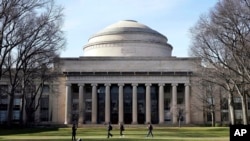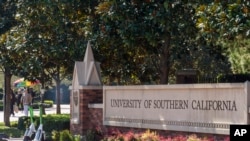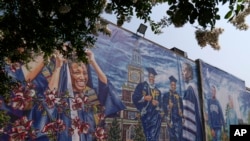Student Union
NYC Too Hectic for You? Try Boston

Why Boston?
The historic city of Boston in Massachusetts is one of America's favorite college towns.
With over 50 institutions of higher education, including the prestigious Harvard University and Massachusetts Institute of Technology, this small metropolitan area, Boston, is home to more than 250,000 college students each year, according to Carnegie Classification of Institutions of Higher Education.
In the 6-mile walk between Boston College on the west border of the city and Suffolk University near the central Public Garden, you will pass Boston University, Simmons College, Wentworth Institute of Technology, Northeastern University, Emerson College and Berklee School of Music, to name a few. Just across the river in Cambridge is the Massachusetts Institute of Technology, Harvard University and Lesley University. Go 20-miles out and you'll include Wellesley College, Babson College and Brandeis University.
If you are studying in the States and are overwhelmed with the madness that is New York City, you should join the other 250k college students and check out Boston for a weekend.
Fun things to do in Boston without breaking the bank ...
Freedom Trail
A free way to get a quick history lesson on the American Revolution is to take the 2.5 mile-long Freedom Trail. As you follow the red-striped cobblestones on the sidewalks of Boston you will see 16 different historic sites ranging from old meetinghouses and churches to the first burial grounds in the city. Some specific stops include Paul Revere's house, the site of the Boston Massacre, and the Old South Meeting House.
The great thing about the Freedom Trail is that you can either do it on your own and follow it using a map or take a guided tour led by tour guides dressed 18th-century costumes. Here is a daily schedule of public walking tours. You can also purchase discounted online tour tickets here. Ticket prices are $12 for adults, $10 for Seniors and $6.50 for children between the ages of 6-12.
Faneuil Hall
Another Boston staple on the edge of the waterfront and next to Government Center is Faneuil Hall Marketplace. Faneuil Hall Marketplace has been around since 1742 when it was named "The cradle of Liberty" by the founding fathers, according to the Faneuil Hall website. There is a ton to do, eat and see at Fanuiel Hall. From the street performers and musicians playing on the cobblestones outside, to over 70 retail shops between the hall and the North and South markets, and dozens of options of cuisine in Quincy Market, Faneuil Hall is the place where tourist and residents alike gather to enjoy the best of Boston.
Boston Common
If you want to visit the oldest public park in the United States you have to check out the Boston Common in downtown Boston. Here you will be able to see a handful of historical monuments, skate on the Frog Pond and hang out on the grass and enjoy the views of Beacon Hill and the Public Garden. Back in 1634 when the Common was created, it was used for pasture and military gatherings. Ice skating on the Frog Pond will cost you $6 to get in and $12 to rent skates.
Boston Public Garden
Connected to the Boston Common is the Public Garden. The Public Garden is a part of the Emerald Necklace, a series of parks connected throughout the city. The Public Garden was created in 1837 and is America's first botanical garden. Here you can walk around the central lagoon, feed the squirrels, take a swan boat ride and hang out on the bridge all while admiring the colorful plants and Victorian touches. I personally like to hang out here with a group of friends in the spring time or study for my finals once all the snow finally melts. The swan boats are open from April to September and cost $3.50. They were created and have been run by the Paget family for over 100 years.
The Esplanade
Another part of Boston's Emerald Necklace and one of my favorite spots in all of Boston is the Esplanade. It is most famously known to host the Boston Pops Fourth of July Fireworks but is also a calling ground for runners and relaxers to watch the sunset over the Charles River as Harvard rowing team pass by. There are also free concerts and events held at the Hatch Shell on the Esplanade during the summer.
On the edge of the Charles River (on the Boston, not Cambridge side), the Esplanade stretches from the Museum of Science to the Boston University Bridge (approx. 6 miles). A fun thing to do here while you are visiting is to pack a picnic, bring a speaker to hook up your favorite playlist, and watch the sunset with your fellow travelers. Not a lot of tourists come to this area because it is hidden. But enjoy the view like a true Bostonian.
Newbury Street
A last must-see part of Boston is Newbury Street in the BackBay neighborhood. Along the eight blocks of 19th-century brownstones are hundreds of boutiques, restaurants and cafes. Stores range from high-end retail shops to more bohemian boutiques. Newbury Street is a place to window shop. If you are a broke college student like me, grab a cupcake from Georgetown Cupcakes, a D.C. based bakery. Newbury Street definitely won't disappoint if you love to shop but might put a dent in your wallet.
These are a few of many historic and culturally stimulating places in the great city of Boston. If you are looking to spend a little more cash make sure to check out the Museum of Fine Arts [$23 for students], New England Aquarium [$27 for students,] Fenway Park, the Boston Public Library [free!] and the Skywalk Observatory [$14 with Student ID].
[Cheaper] ways to get to Boston:
Fly
Like any trip, if you plan ahead flying into Logan International Airport will be your quickest bet. It can get pricey if you are on tight budget and plan last minute. However, deals on flights have been exceptionally low lately so make sure look at all your options.
For example, a round-trip flight from JFK Airport in New York to Logan International in Boston after the holidays will run you about $90 to $100. If you are flying out of the D.C. area, it will cost you between $140 and $160.
Amtrak It
If you are studying on the East Coast, I suggest taking an Amtrak train right into South Station in Boston. Amtrak offers discounts for students and has pretty reasonable prices if you book ahead. If you don't book ahead, it can get very pricey.
If you were planning to visit Boston over spring break in March, a roundtrip ticket from Washington would cost around $160. If you decided Monday that you wanted to go this weekend, it would cost upwards of $250. My advice is if you know you want to go to Boston and are a fan of traveling by train, book at least two to three months in advance to be most cost efficient. Amtrak allows you to modify your trip just in case something comes up during your travel dates.
By taking the train you also get a great view of the coast on the North East Regional line. From the bright NYC skyline to the boats on the dock in New London, Connecticut, you will get a glimpse of the Northeast while sitting back and relaxing -- most likely avoiding homework like I always do.
Bus
The cheapest overall is taking a bus. MegaBus, Greyhound or Bolt bus are three popular companies. Greyhound from NYC to Boston for a weekend after the holidays runs about $56 roundtrip while MegaBus is about $26. But fair warning: Traffic getting into the city can be atrocious at rush hour in the morning and after work. Driving through Connecticut at any time can be frustrating, so prepare for some added time and bring a book or homework to complete because most buses have free wifi.
Hitch a ride with a friend
Another option is hitching a ride with a friend from school who lives near Boston when they go home for breaks.
Jana Goyvaerts and Charlotte Bonami, international students from Belgium who are enrolled in an academic internship program in D.C., went home with a co-worker for Thanksgiving break. Goyvaerts and Bonami not only enjoyed their first traditional American Thanksgiving meal but were also able to see what another smaller city in the U.S. has to offer. This was for free as a co-worker's dad drove them back and forth.
There are many ways to get to this historic hub. My advice is plan ahead and use all your resources.
Where to stay?
Hotels in Boston are pricey. If you are willing to pay $200+ a night for a hotel check out the Omni Parker House or Renaissance Boston Waterfront Hotel.
If you don't have that kind of cash check out the options on Airbnb for the Boston area. Prices depend on what kind of room you are looking for. A private room ranges from $35 to $90.
If you can, try and stay with friends or extended family members. Reach out and ask. This will not only give you a familiar face and personal tour guide, but will cut back on costs for a bed to sleep in and give you more money to spend on seeing and experiencing Boston.
Wondering how to get around in Boston?
Get a Charlie Card. This is a refillable card used to pay for the subway system, which Bostonians call the "T. " Boston's subway system is the first and oldest underground subway rail in the United States that opened September 1, 1897. The T definitely reflects the age of the city, so be patient, my travelers!
Do you have a favorite tourist attraction in Boston you want to recommend to others? Want to know other places to travel? Please leave your comments here and on our Facebook page, thanks!
See all News Updates of the Day
Social media breaks are difficult, but necessary

Between online classes, maintaining social connections and working on projects, college students can have a hard time disengaging from the demands of technology.
In Florida International University’s PantherNOW, Ariana Rodriguez offers strategies for taking a break from social media. (April 2024)
- By Melos Ambaye
Many master's degrees aren't worth the investment, research shows

Nearly half of master's degrees have a negative financial return, according to new research by the Foundation for Research on Equal Opportunity, an economic research organization.
The study indicates that many graduate degree programs do not increase lifetime earnings enough to be worth it.
While 23% of bachelor’s degree programs yield a negative financial return on investment, 43% of two-year degrees and master’s degrees fail to deliver a return, according to the study by Preston Cooper, a senior fellow at FREOPP.
Cooper assessed the return on investment for 53,000 degree and certificate programs to determine whether a student’s lifetime earnings outweigh program costs and the risk of not completing their degree.
His findings show that a student’s field of study was the overriding indicator of return on investment at the undergraduate and graduate level.
Engineering, computer science and nursing bachelor’s degrees have high financial returns on investment, while programs in education, fine arts, psychology and English usually have low returns.
Graduate degrees in medicine and law tend to have strong payoffs. But a large share of master’s programs, including the MBA, frequently have low payoffs, according to Cooper.
Although workers with master’s degrees earn 16% more than those with only bachelor’s degrees, Cooper says the figure fails to account for students who had “higher preexisting earnings potential.”
“MBA students typically have high preexisting earnings potential, having often chosen high-ROI undergraduate majors such as finance and economics,” Cooper writes. “So the MBA adds little value on top of that.”
The study indicates that high starting salaries are predictors of high returns on investment. Degrees with starting salaries of $57,000 a year or more deliver the best lifetime returns.
But the return on investment of a degree can vary depending on the educational institution.
“Students interested in fields with low average pay can still find some schools that do well transforming those fields of study into high-paying careers,” Cooper writes.
The quality of an institution also matters, said William Tierney, professor emeritus of higher education at the University of Southern California.
“An MBA from Harvard is a likely ticket to a good job,” Tierney told VOA. “An MBA from the University of Phoenix, less so.”
But students pursue graduate programs for more than just financial reasons.
“Some degrees open up careers in fields that students may enjoy, such as in the performing arts,” Robert Kelchen, head of educational leadership at the University of Tennessee, Knoxville, told VOA.
“Others can help gain access to social networks or simply help students learn about a topic that is of interest,” Kelchen added.
Cooper told VOA that it might make sense for students in degree programs with low returns on investment to switch majors if they can still graduate on time.
He found the worst outcome for a student’s return on investment is dropping out of college “because they must pay for one or more years’ tuition and spend time out of the labor force.”
Lawmakers who fund higher education have a responsibility in ensuring “higher education delivers on its promise of economic mobility,” Cooper said.
Nearly a third of federal funding, including Pell grants and student loans, pays for higher education programs that fail to provide students with a return on investment, according to the study.
Cooper’s view is that “some schools should shut down low-ROI programs and reallocate institutional resources to programs with a better return.”
“There's definitely this narrative out there that higher education is always worth it, and you should always try to get that extra degree because it will increase your earnings,” he told VOA. “That's reinforced by colleges who make lofty promises regarding their graduate degree programs' outcomes, which all too often fall short.”
Harvard students end protest as school agrees to discuss Gaza conflict

Protesters against the war between Israel and Hamas were voluntarily taking down their tents in Harvard Yard on Tuesday after university officials agreed to discuss their questions about the endowment, bringing a peaceful end to the kinds of demonstrations that were broken up by police on other campuses.
The student protest group Harvard Out of Occupied Palestine said in a statement that the encampment "outlasted its utility with respect to our demands." Meanwhile, Harvard University interim President Alan Garber agreed to pursue a meeting between protesters and university officials regarding the students' questions.
Students at many college campuses this spring set up similar encampments, calling for their schools to cut ties with Israel and businesses that support it.
The Israel-Hamas war began when Hamas and other militants stormed into southern Israel on October 7, killing some 1,200 people and taking 250 hostages. Palestinian militants still hold about 100 captives, and Israel's military has killed more than 35,000 people in Gaza, according to Gaza's Health Ministry, which doesn't distinguish between civilians and combatants.
Harvard said its president and the dean of the Faculty of Arts and Sciences, Hopi Hoekstra, will meet with the protesters to discuss the conflict in the Middle East.
The protesters said they worked out an agreement to meet with university officials, including the Harvard Management Company, which oversees the world's largest academic endowment, valued at about $50 billion.
The protesters' statement said the students will set an agenda that includes discussions on disclosure, divestment, reinvestment and the creation of a Center for Palestine Studies. The students also said that Harvard has offered to retract suspensions of more than 20 students and student workers and back down on disciplinary measures faced by 60 more.
"Since its establishment three weeks ago, the encampment has both broadened and deepened Palestine solidarity organizing on campus," a spokesperson for the protesters said. "It has moved the needle on disclosure and divestment at Harvard."
Chinese students report interrogations, deportations at US airports
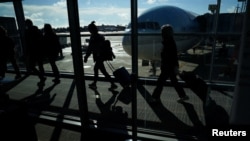
Academics from China are reporting increased scrutiny at U.S. airports, with valid visa holders being interrogated and turned away by Customs and Border Protection Agents.
Phones and laptops have been searched, and researchers have undergone extensive questioning about their work. One graduate student at Yale, who was midway through her PhD, was turned back at Dulles airport and banned from entering the U.S. for five years, according to The Guardian.
- By Phil Mercer
Australia plans limits on international students
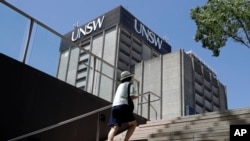
Australia says it will impose limits on the number of international students coming into the country to ease stress on housing and to reduce immigration.
The government in Canberra has said that international education programs, under which foreign students come to study in Australia, were fertile ground for immigration and visa fraud.
In 2023, official figures show that 787,000 international students studied in Australia, exceeding levels seen before the COVID-19 pandemic.
The Canberra government plans to cap the number of overseas students to ease stress on rental accommodation and to curb levels of immigration.
Senior government ministers have said caps for education would be part of a broader plan to manage migration, increase the availability of housing and to address skills shortages in the economy.
However, the university sector has insisted the proposals would damage Australia's global reputation as a welcoming, safe and world-class destination for students from other countries.
Education has been one of Australia’s most lucrative exports, but the left-leaning government in Canberra has said the international education sector, which includes many smaller private English language colleges, vocational and training institutions as well as larger universities, has been used as a way for unskilled migrants to stay in Australia.
Michael Wesley, the deputy vice chancellor at the University of Melbourne, told the Australian Broadcasting Corp. Tuesday that he hopes the government will target unscrupulous education providers.
“We welcome the crackdown on non-genuine education providers, which provide a backdoor into permanent residency for people who are not genuine students," Wesley said. "We are confident that all of our international students are genuine students and, so, we would hope that the impact of these visa caps will be at the non-genuine end of the education sector.”
Rental accommodation in many of Australia’s larger cities is often expensive and in short supply.
Analysts have said that surging prices are the result of years of underinvestment in affordable housing.
Education institutions would be required to build accommodations for their students if they wanted to exceed limits of the caps. Specific quotas for international students have not yet been made public.
The government in Canberra said it will change Australia’s Education Services for Overseas Students Act to give the education minister the authority to set limits on student enrolments for each education establishment, including specific courses or locations.
The majority of overseas students in Australia come from five countries: China, India, Nepal, the Philippines and Vietnam, according to government data. They contribute billions of dollars to the Australian economy.




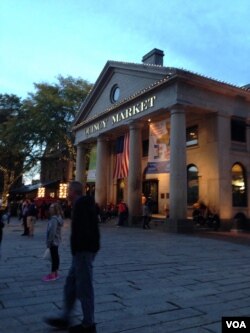
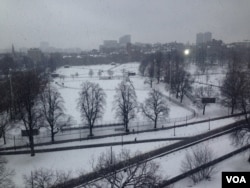


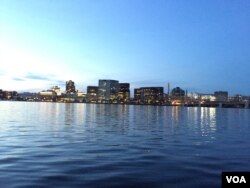


![Charlotte Bonami [right] and Sydney Larose [left] stand in Boston's Public Garden over Thanksgiving Break. Photo courtesy of Charlotte Bonami.](https://gdb.voanews.com/4CE6C5A9-F3F1-4CE5-A7C7-EF8803E1045F_w250_r0_s.jpg)

